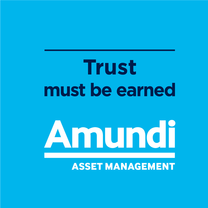Newsroom
Amundi Global Investment Views - September 2019
UK, September 18, 2019

Back to school. Back to normal?
Financial markets have been rattled in the past weeks over escalating trade war between the US and China as both imposed tariffs and counter-tariffs on imports. Idiosyncratic risks stories in countries such as Argentina resurfaced, the UK’s parliament was suspended over Brexit chaos and Italy witnessed a political crisis of its own, although a government seems in sight now. Investors’ search for safety pushed core bond yields to unprecedented low levels, with yield on the 30-year German bunds turning negative for the first time ever. The US yield curve inverted for the first time since 2007, with yields on 2y note rising above those on the 10y bond.
There are three main factors, in our view, behind this summer malaise.
First, markets do not like policy uncertainty and ambiguity, and both have increased. Geopolitical risk spillovers on the economic outlook are evident. Recession worries are overdone in the US (we don’t expect a recession in the next 12 months) and we should not overestimate the role of the yield curve inversion as a harbinger of recession, in the era of unconventional monetary policies. Secondly, the risk of escalation of trade war turning into a currency war is looming as both the US and China fight for global hegemony. The yuan weakening above the 7.0 mark, the first time since the 2008 crisis, has been seen by the US administration as an attempt by the Chinese to manipulate currencies. However, we don’t share the view that China will manipulate the currency proactively. Authorities are only seeking to stabilise the exchange rate to offset the negative impact of tariffs on the competitiveness of Chinese exports. Third, political pressures on Central Banks are mounting. The Fed has delivered a rate cut and ended quantitative tightening. But the manner in which Trump has been pressurizing Jerome Powell to reduce rates is a challenge for Fed’s independence, more so in light of the 2020 Presidential elections.
What are the investment implications of these elements?
Fall in core bond yields is a reflection of a complex scenario. The narrative seems to be changing from ‘bad news for the economy is good news for risk assets,’ supported by ultra-dovish central banks to ‘bad news may start becoming bad news,’ with markets pricing economic downturn. As a result, markets and even politicians expect central banks to intervene more aggressively, but markets may have gone too far in pricing policy actions as global growth could be stronger than expected.
In the short term, expectations of aggressive monetary easing could limit equity market downside in this highly uncertain environment. Central Banks may help to extend the cycle, but the power of these new measures will be lower than in the past, if not accompanied by consistent fiscal support. It is potentially good news that Germany could stimulate the economy to avoid recession. But we are at a very early stage, the amount is limited and not coordinated at the EU level. Equity valuations will be supported by low bond yields. The fact that earnings revisions have already been massive, we could see a stabilization in the coming weeks. Should the equity markets weaken further this could provide some tactical opportunity to add exposure, but at this stage with fading effects of Central Banks’ policies, earnings outlook will be the main drivers of the markets, and risks are to the downside.
Search for yield will continue, benefitting primarily quality IG bonds and EM debt. However, with the ultra-low level of bond yields, high duration reached by the main bond indices, and scarce liquidity, investors should be ready to face higher volatility. An active and diversified approach that puts all the fixed income levels to work (duration, currencies, curve, credit), can help to add value in the yield desert and avoid the less stretched situation. Liquidity assessment is also becoming crucial as in case of disappointment on central banks actions, less liquid areas can be more at risk.
Overall, heightened volatility will take investors back to the drawing board, emphasising the importance of basics yet again. To protect portfolios, investors could mitigate risk by adopting adequate hedging strategies (gold, options, and currency) and also consider retaining a positive view on US duration as a hedge on market and liquidity risks.
Expert
Vincent has been Group Chief Investment Officer since February 2022. Previous to that, he was the Group Deputy CIO of Amundi since 2015. He is a member of the Globa[...]
Read moreAbout Amundi
About Amundi
Amundi, the leading European asset manager, ranking among the top 10 global players[1], offers its 100 million clients - retail, institutional and corporate - a complete range of savings and investment solutions in active and passive management, in traditional or real assets. This offering is enhanced with IT tools and services to cover the entire savings value chain. A subsidiary of the Crédit Agricole group and listed on the stock exchange, Amundi currently manages more than €2.3 trillion of assets[2].
With its six international investment hubs[3], financial and extra-financial research capabilities and long-standing commitment to responsible investment, Amundi is a key player in the asset management landscape.
Amundi clients benefit from the expertise and advice of 5,600 employees in 35 countries.
Amundi, a trusted partner, working every day in the interest of its clients and society
Footnotes
- ^ [1] Source: IPE "Top 500 Asset Managers" published in June 2024 based on assets under management as of 31/12/2023
- ^ [2] Amundi data as at 31/03/2025
- ^ [3] Paris, London, Dublin, Milan, Tokyo and San Antonio (via our strategic partnership with Victory Capital)
Footnotes




